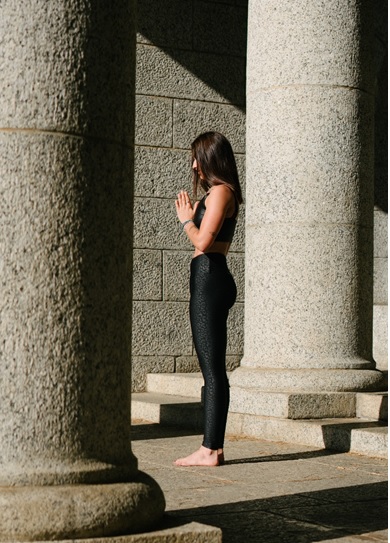“Yoga is not just doing some exercise, It is much more. It is to expand your awareness, sharpen your intellect And enhance your intuitive ability.”
– Sri Sri Ravi Shankar
“Breath in and……… breath out”
Doesn’t it remind you of YOGA ?
But how many of us really understand what Yoga is and how it works?
Is it just some highly evolved gymnastic poses that people tend to do or just breathing techniques, or is there more to it? Is Yoga a way to a healthy mind and body?
Let’s find it out together.
With this article, I am bringing to you the little knowledge that I have on Yoga and the its way to a healthier lifestyle, we will be going through the basics of it that one preferably should know before diving into this vast ocean of self-exploration.
Yoga in today’s world has long been misunderstood as a way of replacing the excessive workout regimes or is also thought of as an activity full of poses. But Yoga is primarily a spiritual discipline and to understand the power of yoga and what it withholds one has to experience it, no theory or lecture can help you understand it better than you are experiencing it yourself.
But before that, it’s essential you do some homework and go, cause it might just change your current approach towards YOGA. You need to see what the brief history of yoga can make you realise, its richness and consistency will make you wanna dive into it.
In our busy scheduled day to day life where, hunger, money, work, emotions are ruling our world and priorities, we hardly get time for ourselves, to explore the power we withhold within us, to feel the matter that we are made of. Yoga and its way to a healthy mind and body will help you unleash these factors of self-exploration, connectivity with yourself as well as the world around you and, most importantly, the connection between your body and mind.
This transformative process comes with regular practice and dedication, but the beauty of Yoga is that you need not be an expert in the field to experience the benefits that come along with it. Proper guidance is essential and will help you in the longer run, but anyone can start with baby steps.
Before we start exploring the grounds of Yoga, remember that Yoga is for anyone and everyone, there might be fancy words used further in the texts, but there is no need to get intimidate by the terminology used.
Here is a brief outline as to how will shall proceed with the article
- What is Yoga?
- History and origin of Yoga
- The science behind Yoga
- Styles of Yoga
- Benefits of Yoga
- Beginners tip on Yoga
- Conclusion
- Questions
WHAT EXACTLY IS YOGA?
Let’s go all-geeky on this for a while, so the word “yoga” primarily has been derived

from the good old roots of samskriti, There are two particular Sanskrit words that it came from, ‘yujir’ or ‘yuj ’.
The Hindu Vedas in their scripts (mantras) have used the exact word with the meaning of, “yoking”, “joining”, “to bind” or “to unite”.
In fact, the word ‘yuj’ has been in Hindu history since a very long time, it has been described in different ways in different periods, but the ultimate understanding remains the same.
Yoga, in simple words, is “the art and science of healthy living by focusing on bringing harmony between one’s mind and body, thereby uniting the spirituality of your body with the consciousness of your mind.”
In ancient India, the only people associated with Yoga were believed to be the hermits, seekers, monks who believed in spirituality, and the aspects of knowing the “inner-self,” they were called as “yogis.”
The modern world and scientists have tried to manifest these philosophies of self-realization and the connection between the mind and body as their field of exploration, and that is when this Yoga practice comes into play. Yoga in today’s world is considered either science, philosophy, or even a practice.
FEW DEFINATIONS OF YOGA
- Patanjali yoga sutra-”
योगश्चित्तवृत्तिनिरोधः — I.२.
Yoga-chitta-vrtti-nirodha- I-2
-Patanjali Yoga Sutra
The essential sayings of Patanjali on Yoga meant that any technique that helps to silence/reverse the whirlpool of disturbance (vrtti) in our mind (chitta) is called Yoga.
- Katha Upanishad: “Katha UpanishaddefinesYoga as a spiritual way of keeping stability between the body and mind by detaching themselves from the external, worldly affairs.”
“ताम्योगमितिमन्यन्तेस्थिरामिन्द्रियधारनाम् / II-६.११..”
Tam Yogamiti manyante Sthayamindriyadharanam/ II-4.11
– Katha Upanishad
Although in the western European side, the so-called modern yoga practices are aimed more towards physical exercises, the development of flexibility and strength in the body, which by no means is wrong. However, their roots and originality come from the ancient Indian yogis with the aim of spiritual enlightenment and individual consciousness. The brief history of yoga gives an idea about its origin.
HISTORY AND ORIGIN OF YOGA
Lets go through the brief history of yoga, and how history made it possible to understand its essence.

The history of Yoga goes back to the very beginning of civilization but the apparent originality of Yoga and its practices are quite uncertain of, and its history is far more complicated than it can be thought of.
The exact year of its origin is difficult to predict because the seals from the Hindu Indus valley civilisation shows figures performing a particular style of sitting that are considered the yoga asana (posture). So does this prove the existence of the knowledge of Yoga during that time? , now that is something that could not be proved or disproved yet.
In Hindu culture, the manifestation of Yoga has been observed in the epics of Mahabharata, Vedic and Upanishadic heritage, Buddhist and Jain tradition, etc.
Although Yoga is known to have been in practice from the pre-Vedic times, it was through the great Sage Maharishi Patanjali that made Yoga a systemic practice among people. Many sages after Patanjali documented the practices in literature, so as to be followed by the next generation [2].

Its existing knowledge of Yoga was the information gathered from the literature of Vedas, Upanishads, Puranas, etc.
The classic period of Yoga is considered to be between 500 BC-800AD, whereas the modern period of Yoga is considered as 1700-1900 AD, the period of the Ramakrishna Paramhansa, Vivekananda, etc.
In our contemporary time, the practices of Yoga have evolved from what it used to be. Although everyone describes it in their own ways, as per their thought and experience, the essence of Yoga remains the same.
THE SCIENCE BEHIND YOGA
After going through a hell lot of articles, papers, and having practiced it myself, I realized that Yoga isn’t merely an activity like you cannot “do yoga”. It is a state of being, the feeling of stillness and calmness that one feels. Yoga is the state of your mind.
Yoga has always been connected to the mind and body. It is the coordination between your body, breath, and your state of mind. This is why yoga classes include all kinds of meditation, breathings (pranayams), and asana (positions).[3]
There is more to Yoga than just nailing few postures; researchers have been studying the effect of Yoga on various aspects of our body, A study in American pain society said that the brain of an individual highly gets benefited from the Yoga practices.

So, what does the brain look on Yoga?
- After several studies, researchers from Boston University school of medicine found that the postures from Yoga increase the amount of GABA (Gamma immune butyric acid) in the brain.
- GABA, in general, helps to calm our nervous system and helps to reduce pain. It was observed that just one hour of Yoga increased the level of GABA by 27% in the test subjects; thereby uplifting one’s mood and making them feel happier.
Is it just your brain that is affected?
No, in fact, there a vast amount of sites that have positively claimed for the benefits of Yoga.
#1– Researchers have found in Oxford University that Yoga helps lower the levels of a stress hormone known as “cortisol”, thus making you feel relaxed and happy all the time.
#2– One the other hand scientists from the University of Washington have found that Yoga somehow helps in something called “mindful eating”.
That is Yoga can increase your awareness toward eating and being healthy, thus giving you better control over your eating habits and urges.
It is interesting how science defines and explains Yoga; the idea of Yoga has been interlinked with our internal body system, at a molecular level by many scholars.
The main principle on which the philosophy of science is based on is- “Prana-with space”, it is believed that need to create a so-called “space” in our body for the proper inflow of energy, and that is achieved by Yoga-
- When we do “asanas”, that lets your body create that space by stretching our body, providing us with the appropriate amount of inter-cellular space that one needs for the better flow of energy.
- On a physical level, Yoga is a way to establish a connection within yourself, i.e, connection of the body with the mind (prana and chittra).
- On the other hand in a molecular level, they explain this connection/ channels to be the blood vessels, never impulses that exists in our body. The concepts of “prana” is compared to the heat, electromagnetic energy in our system, and “chitta” being the information that flows in our body by nerves, hormones, etc.
Thus, to harness this energy and enhances the flow of energy in our body (which already exists) we need a medium, Yoga is said to have the power to do this.
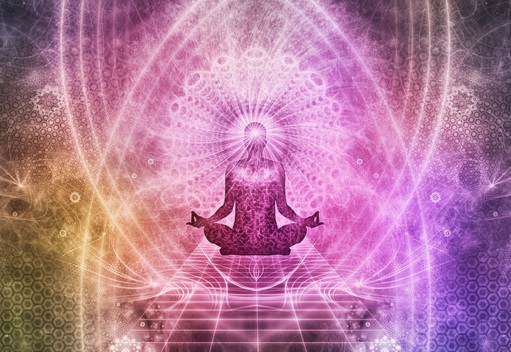
What is mind and body connection?
By now, you might have read this particular phase of, yoga being: “the connection between mind and body”.
What do people actually mean by this?
Our body has a unique way of working, we hardly notice the day to day activity of our own body, unless it gets into some trouble or pain, but why should we restrict yourself from feeling our internal being and have a control over it,
You need to know that our body has a unique way of communication. It carries out various chemical signals, which further is converted to your emotional response, thus unknowing it is your body and mind that makes you feel sad or happy.
You must understand that the word “mind” here is not similar to your brain. Mind here is the mental status, the thoughts, the emotions that you carry. The brain is just the tool that allows you to experience and remember harness these.
The main aim of Yoga is to work on this mental status of your mind, the consciousness, the awareness of your emotion, and a way to gain control over it.
This self-awareness and control, indirectly connects you to your body, because it’s our emotion that we set into action through our body.
The concepts of the theory of “mind and body connectivity” is backed up by science as well.
- Your brain has the capacity to produce certain substances that can lift your mood and health (e.g., gamma globulin, endorphins, GABA) as mentioned earlier.
- Researchers have seen a direct connection between our thoughts and emotion and the way your body reacts to it.
- So positive thoughts make your body to produce more of these health-enhancing substances.
- When you do not have a hold on your stress and emotions, your body reacts negatively by releasing stress-hormones, even when it is not required. This physical condition is called the “flight or fight stress response”.
- Having said so, this response of flight or fight is important in situations when you really need it, like to avoid accidents or while being chased by a dog.
Thus our ability to connect our mind with our body becomes essential; Yoga sets your mind free of negative thoughts and gives you a sense of relaxation, thereby calming your inner thoughts and physical body.
THE POWER OF BREATH
The practice of Yoga mainly has three components to it,
- Asanas (the postures and stretching)
- Pranayama (the breathing practice) and
- Dhyana (meditation)
There are different forms and styles of Yoga that we will be looking into further in the article, but I wanted you to know a bit about the “art of breathing”.
Have you ever noticed the way you breathe? I suppose no because breathing is an involuntary action with some voluntary control (i.e., you have little control over it). Since we see our body doing an excellent job in keeping us alive, we never seem to noticed or worry about how you breathe.
But, do you know you can be stress-free and relaxed just by focusing on your inhales and exhales. This practice is said to be the “mindful breathing”.
Pranayama is at once a physical-health practice,mental-health practice, and meditation. It is not just breathing training;
its mind training that uses the breath as a vehicle.
– Dr. Roger Cole
Researchers have linked the technique of mindful breathing with the way our body reacts to it:
- It is said that our brain gets signals from several networks of the neuron and sensory receptors with every breath that we take. Breathing fastly gives the sign of stress to the brain, thereby signalling the brain to secrets stress-hormone and vice versa.
- Science has discovered that people who practice “yogic breathing” or Pranayama on a regular bases, have a well active brain than others.
- Just by prolonging every breath, breathing less frequently and breathing deeper along with some proper guidance regarding the same, you can get rid of stress, anxiety, depression and even cardiovascular diseases.
I won’t be going much into the details of Pranayama and the anatomy of the breathing cycle as of now. We shall learn about it in details in some other articles.
STYLES OF YOGA
There are more than 20 styles of Yoga that can be practised; you need not stress yourself out thinking of adding all to your to-do-list.

Most people usually go with a combination of 2-3 types of style, based on their comfort level and their interests.
Here are a few basic yet major yoga styles that you might wanna try.
- AYURVEDA
It is the most common styles of Yoga, which involves the combination of Asana, Pranayama and meditation.
The aim is to find a connection between your minds by controlling the action of breath.
- ASHTANGA
The word “asht+anga” means “eight-limb” in Sanskrit, that refers to the eight-limbed path.
This concept of ashtanga comes from the philosophy of Patanjali, where he has mentioned in the book of “yoga sutra” the eight limbs/principles that one should follow to achieve salvation.
- Yama (community discipline)
- Niyama (personal disciplines)
- Asana (yogic positions)
- Pranayama (yogic breathing)
- Pratyahara (taking control over your senses)
- Dharana (gaining awareness)
- Dhyan (Meditation/focus)
- Samadhi (gaining salvation)
This is one of the yoga styles that aren’t suitable for beginners as they involve a few challenging poses and can be quite vigorous.
- ANUSARA
Anusara means “going with the flow”, it mainly emphasises on the “principle of alignment”, the alignment of your body with full consciousness thereby aligning the body and mind to do a task.[5]
It is considered to be the new modified form of Hatha Yoga, which will be discussed further.
- BIKRAM YOGA
Also referred to as “hot yoga”, is primarily named after Bikram Chowdhury as he was the one who devised it.
It is a practice that involves 26 poses, including postures of Hatha and mediation, which are ideally performed in a heated room at 105˚F. Thus, the name “hot yoga”.
- HATHA/ANANDA YOGA
In Sanskrit, the word “hatha” means “with force”. Also called the “restorative yoga”.
It is based on the approach of balancing the physical and mental health. If you are new to Yoga, you might wanna start with this, as it is the least challenging styles of Yoga.
It is called restorative Yoga because it helps in calming down your body and mind, thus restoring peace and stress-free mind.
This form of Yoga is more practised in Western culture, where they refer to Hatha yoga as the main yoga form. Whereas there are other forms of Yoga, which does not involve the physical activity of the body like raj yoga, karma yoga, kriya yoga.
- IYENGAR YOGA
This Yoga practise is named after B. K. S Iyengar. This type of yoga style uses props for the asanas.
It uses props like blocks, pads and straps.
- KUNDALINI YOGA
In Sanskrit the word, “kundalini” means, “coiled”, “circular annular”. It resembles snake-like formation.
This kind of Yoga involves chanting of Mantras and meditation in it.
- VINAYASA YOGA
It is also popularly known as “power yoga”. It is the style of Yoga that practises the synchronisation of breath with the body.
There are few other styles practised by many people, like:
- Jivamukti yoga
- Prenatal Yoga
- Yin yoga
BASIC POSES OF YOGA
The benefits of yoga are beyond limits and adding Yoga to your life may help you improve your flexibility.
The poses of Yoga practises are technically termed as “asanas”. Research has shown several benefits that Yoga and its asanas on their body, mentally as well and physically.
The asanas help you to have control over your body, maintain the structure and balance.
It is said that stretching in your body causes flexibility and maintaining the pose/ asanas help you concentrate on little things like your breathing pattern, shape and your still-full mind.
Here are a few basic yoga asanas that can help you start the journey.
Sukhasana – Easy Pose

- Sukhasana is known to be the most natural pose of all the asanas.
- It is a sitting pose, most commonly used for mediations and pranayamas.
- It helps in keeping our spine straight and focus on our breathing.
- It is one of the most relaxed poses that you can do, by sitting crossed leg, spin straight.
Vrksasana – The Tree Pose

- It is one of those poses/asanas that will help you gain balance in your body.
- This asana helps you stretch your body starting from your leg to your toe, thereby giving you a feeling of comfort.
- The pose makes you stand on one leg with both your hands up in the air with your palms together.
- The pose replicates the structure of a tree and thus called so; it helps in strengthening your core, legs and arm.
Adho Mukho Svanasana– Downward Facing Dog

- This asana is in the form of inverted V-shape.
- It also helps us work on our flexibility; it helps us stretch our body, tone the arms, open up our shoulders.
- It helps in the influx of blood flow through the body.
Balasana– The Childs pose
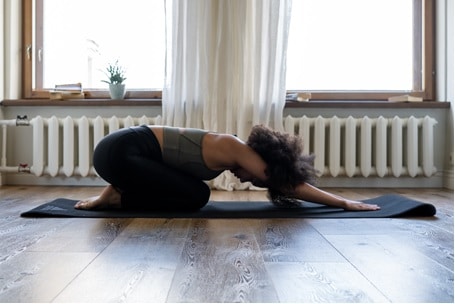
- The child’s pose is one of those asanas that is used to relax your body.
- It is usually performed at the end of every high intense Yoga or asanas.
- It is the most calming pose that makes you feel all relaxed and poised.
Naukasana– Boat pose
- The term Nauka in Hindi implies to “boat”; thus, this pose is also called the boat pose.
- It is an asana that helps you strengthen your core muscles; they are highly used to reduce belly fat.
- It helps you gain stability in your body, increasing mental state and awareness.
Bhujangasana– The Cobra Pose

- It is an asana that helps you strengthen your lower back and spine.
- It promotes the process of inhalation and makes your spine flexible.
Kursiasana– The Chair Pose
- It is one of those intense poses, it highly helps in strengthening one’s core muscles of arms and legs.
- Although you might find it difficult to maintain the position for an extended period of time, but it leaves you feeling all energised.
- It helps in building willpower and awareness.
The yoga asanas can help you with not only flexibility but also reduce stress, improving breathing pattern and increase your muscle power.
In fact, studies claim that doing Yoga for just 15-20 mins a day can help you feel better, relaxed and keep your mind focused.
Most of the asanas/poses are held for 3-5 mins with continuous long breaths, and it is suggested to be followed for at least 3 times a week.
Having said so, even though all the poses or asana might look quite easy to do, but they might cause some tension in your body; thus it is always advisable to consult a yoga specialist if you can afford to do so.
Or
Just start at a low pace, don’t push yourself too much right on the very first day; it might lead to some injury. So be careful while practising it.
There are several other poses that Yoga offers, and the combination of these poses is what gives you the different styles of Yoga, one such form of Yoga is:SURYA-NAMASKAR (Sun salutation)
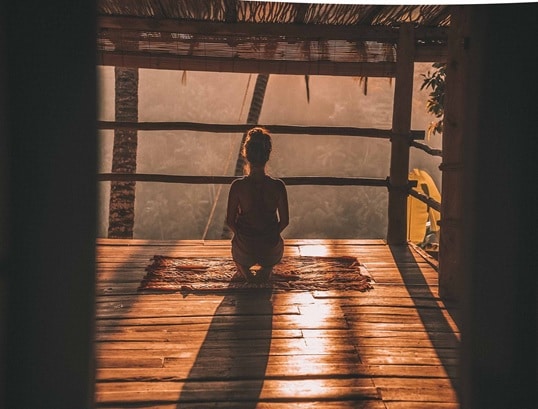
- It is the combination of different yoga asanas/poses.
- It consists of about 12 powerful poses in a sequence.
- This form of Yoga has been in practice since the very beginning of time.
- It is mainly done early morning and includes poses like Bhujagssana(Cobra pose), Adhi Mukha Svanasana (Downward facing dog pose) and many others which have been mentioned above in the article.
A Variant of Surya namaskar is the Chandra Namaskar, which is also practised nowadays.
The benefits of morning yoga are considered to be more than when you do it on an unmaintained time.
BENEFITS OF YOGA / Advantages of Yoga
As mentioned earlier Yoga is mainly the combination of asanas, mediation, and Pranayama. While there are more than 100 types of exercise that one can indulge in, doing just a few of them might just do the trick.
Each of these styles can be either done together or can be done individually. It is inevitable of what Yoga can offer us; Yoga is a way to a healthy mind and body.
Here are few of the benefits of Yoga that are even supported by science.
PERSONAL BENEFITS:

Increases flexibility and balance
Almost all the exercises mentioned above have mentioned about how it helps in increasing flexibility in our body.
The stiffness in your body and joints starts to ease up; we anyways know that any kind of physical activity helps us gain flexibility in our body.
The yoga asanas help us gain an immense amount of balance and control over our body. Several studies are backing this benefit of Yoga. It is said that practising Yoga for just 15-20 mins can make you feel the difference in just two days
Decreases stress and anxiety.
Stress and anxiety are two of the leading causes of depression, and Yoga has claimed to influence these as well.

The specific form of Yoga, called the mediation, has unseen benefits on a human brain, thanks to a science now we know-how.
Suppresses depression(you feel happier)
Depression can sometimes be related to stress and anxiety as they come hand in hand.
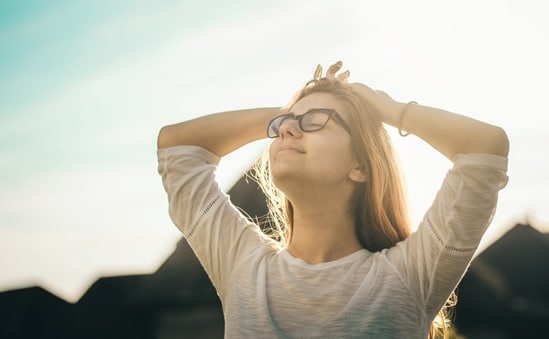
Yoga, on the other hand, are known for its anti-depression activity. Researchers have observed that Yoga can decrease the levels of cortisol production, thereby reducing depression symptoms.[6]
Improves sleep
How long you sleep can affect your body’s blood pressure, can lead to obesity, and may also lead to other abnormalities.

Yoga apparently can help you sleep better. Researches have seen a direct connection between Yoga and its way to promotes better sleep.[7]
Helps in weight loss
Yoga being a form of exercise and physical activity, helps in building up muscles and losing weight.
Yoga can be the calmest way you can help your body lose weight, without actually realising it.
Nevertheless, it is not a substitute to another form of exercises, which is also necessary in server cases, but including Yoga in your workout regime might just boost up your metabolism and uplift you mood at the same time.
Improve breathing
Special Yoga practises called, as Pranayam is a form of breathing exercises, and have been used since ages to improve your breathing capacity.

Yoga enhances your lung capacity and the flow of oxygen to the brain, thus helping in the overall activity of your body.
Helps in “mindful eating.”
Yoga having effects on brain activity helps you to think correctly and take decision with care.

Yoga is said to have an effect on how we eat; researchers call it “mindful eating”, where one’s ability to resist their urges toward food becomes effective.
MEDICAL BENEFITS
Increases grey matter in the brain
Yoga is said to influence in increasing the amount of grey matter in our brain, thus enhancing brain activity. The benefits of Yoga for kids have shown similar activity.
Improves Cardiovascular system
Practises as meditation and Pranayama helps in improving the conditions of the heart.
Yoga and its way to improve mind and body improve our cardiovascular system helps in lowering blood pressure and pulse rate.[8]
Improves immune system
Yoga and its practices help in an incredible flow of energy in our body.
The energy is in the form of cellular communication and interaction in our body, which indirectly helps to improve our immune system[9].
Helps with Back pain
One of the benefits of the yoga asanas are to help you with that pack pain of yours.

There are specific positions in Yoga, which concentrate on the lower back portion, the stretching and flexibility help in lower back pain and assist in improving one’s posture and spine.
BEGINNERS TIP-ON YOGA
If you are all boosted up to, start your self-exploration journey with the help of Yoga, and then here are few tips that might help you in the way.
Have determination
Nothing you do can help you, unless you are willing to do it or if you don’t have the determination to achieve it.
Thus, the very first and essential thing before starting Yoga is the willingness to do it; it will help you focus more and enjoy the entire process.
Yoga is a form of art that can be practised by anyone irrespective of your weight and disabilities.
If you have medical conditions or injury, it might be a bit challenging for you at the beginning to do certain poses, so avoid giving too much pressure on yourself.
Find a guide
Even though the poses or anasans might sound fun and easy to look at, having proper guidance is very important, at least when you are a beginner.

Certain poses in Yoga can cause severe injury without proper guidance and care.
Especially if you are pregnant, or have physical disabilities, its better to seek out for help in the beginning.
Warm-up

No matter what star your yoga practices with some warm-up stretches, it helps you flex your muscles and body, before getting into the asanas.
Start with the basics
Yoga poses can be too much to take it if you start with the toughest one.
The asanas which are mentioned in this post are based on their simplicity and their basicness.
Some of the basic poses that you might consider looking into are the downward-facing dog, Childs pose, cobra pose, etc.
Wear comfortable clothes
Being comfortable is something you might want to do, that includes you wearing comfortable, free/loose clothes, cause there are stretching and exercise that will put stain on your body and clothes.
Relax your body
Just as you start with some warm ups, you should try ending your yoga with some relaxing poses, that will help you in the process.
Poses like savasana and Childs pose are suggested to be practised after ending your yoga session.
CONCLUDING STATEMENT
Even though the practise of yoga has been for many years, and has one of the richest histories, but very recently people have started to understand its real value and benefits. The brief history of yoga shows how practise has evolved throughout the years. Yoga is a great practice that one should undoubtedly incorporate in their life. Yoga will help you seek a healthy mind and body. In recent years Yoga has become the cure to every single problem, thus it is worth trying it once. But you should remember that yoga alone won’t work if you don’t maintain your proper diet, sleep, and health. So, maintain a balance in all is really crucial.
FAQ’s QUESTION
How often should you do Yoga
It is suggested to start doing it on alternate days or at least 3 times a week. Once you find yourself capable and flexible enough, you can start doing it on a regular basis.
The amount of time you devote depends on the form of excise you are following, e.g. – mediation can be done for 45mins-1 hrs. Whereas practices, where asanas are involved, should not be done for more than 30 mins.
Does Yoga compensate for exercises?
The benefits of Yoga and exercise are not to be confused with each other. Each has its advantages. Yoga should be something that you should include in your life to make yourself feel rejuvenated; it should not be a replacement to exercise.
How long will it take to see the results?
It differs from person to person to see such physical changes, but you can feel the energy and mental pleasure just after two days of your practice if you follow the routine correctly.
Yoga is more about feeling the change in your mental status than your physical changes. The feel of happiness and stress-fee mind is what you should be seeking out for.
Which yoga asana/ style should I follow
Well, there is no hard and fast rule for anything, whatever makes you feel conformable you can start doing with that. It is important for you to take a wise decision and know your own capacity, there isn’t any point in putting pressure on yourself. Thus if you are a beginner I would suggest you start with the basic ones.



